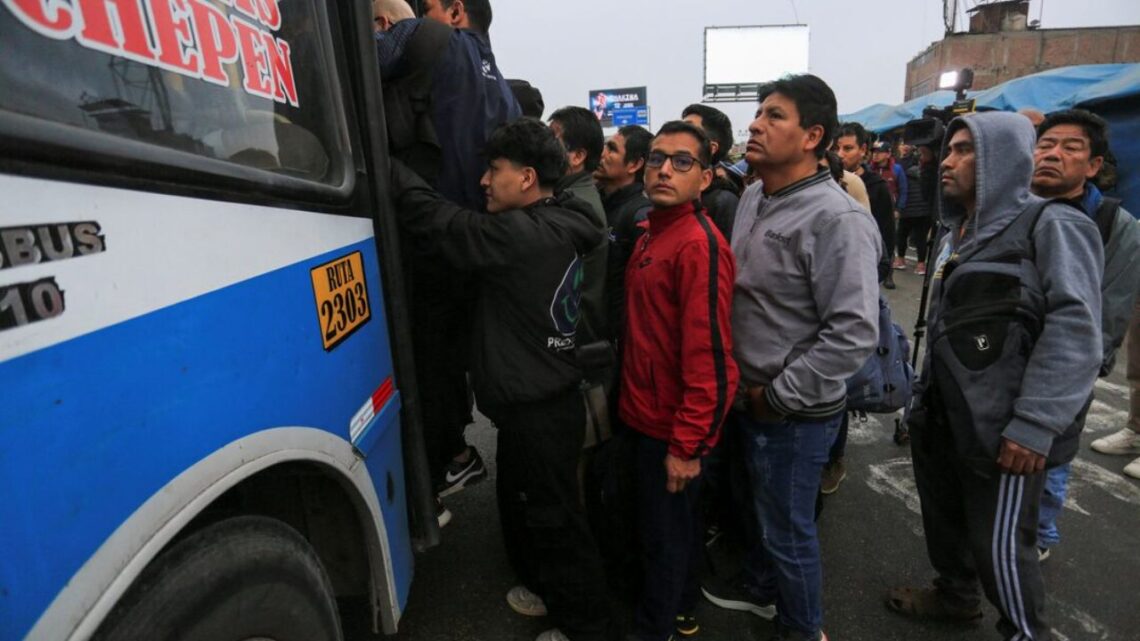Anger and grief struck Lima’s transport sector after the murder of Daniel José Cedeño Alfonso, a bus driver from Lipetsa (Los Triángulos), in San Juan de Miraflores. Assailants on a motorcycle reportedly shot him while he was at work.
In protest, transport unions have ordered a 24-hour “engine shutdown” on October 6, meaning many buses will remain idle as a show of solidarity and a warning to authorities.
The strike is a symbolic but powerful statement against extortion, violence, and impunity in the city’s transit system. Unlike past protests, this action is not designed with marches or blockades—just silent streets as vehicles stay in garages.
What the Shutdown Means & Scope
- The shutdown will last 24 hours, starting at midnight on October 6.
- It impacts urban bus services in Lima and Callao—especially in the northern, southern, and eastern cones.
- Not all transport modes are involved: Metro, Metropolitano, AeroDirecto, and major corridors are expected to continue operations.
- The goal: attach pressure on the government for investigations, protection for drivers, and stronger response to criminal groups.
Which Companies Will Comply?
Several transport companies in Lima and Callao have publicly confirmed they’ll join the shutdown. Below is a table of known participants and their justifications:
| Company | Reason Given / Statement | Notes |
|---|---|---|
| Etuchisa – Los Chinos | Will support strike in alignment with transport unions from cones north, east, and south | Formal acknowledgment via statement |
| El Rápido S.A. | Demands that state guarantee safety and well-being | States it will join with conditions |
| Cruz del Centro S.A. | Will turn off engines and demand prompt justice | Join protest to force accountability |
| Vipusa | Supports shutdown, calls for government protection of transport sector | Emphasizes right to life |
| 41 S.A. | Solidarity move with slain Lipetsa driver | No additional statements |
| Ruta 1261 | Cites increased extortion and contract killing as reasons | Plans to resume service on October 7 |
| Consorcio Vía | Included in strike announcement | Listed among formal affiliates |
| Empresa Z | Named in roster of participating companies | No specific statement |
| Los Loritos | Confirmed solidarity participation | Common in northeast routes |
| Nueva América | Among buses that will stay off road | Adds weight to strike |
| Urbanito | Announced support | Urban route operator |
| Edilberto Ramos | Included in list of acatantes | Local bus line |
| Huáscar | Part of the shutdown group | Another formal line |
| Santa Catalina | Declared adherence to strike | Active in multiple districts |
These companies span different sectors of Lima’s bus network—urban, suburban, and formal routes. Their participation signals widescale dissatisfaction and risk to driver safety.
What Will Still Operate
While many buses go offline, the ATU (Urban Transport Authority for Lima and Callao) has clarified that key mass transit systems will remain active:
- Metropolitano (Bus Rapid Transit)
- Metro lines 1 & 2
- Corridor buses & complementary routes
- AeroDirecto
These systems are run under regulated, centralized frameworks less susceptible to extortion pressures. The ATU intends to maintain 100% operation for these services on October 6.
Public Impact & Government Response
This planned engine shutdown is expected to cause major disruption:
- Commuters in affected zones may find no buses on their usual routes.
- Some schools and offices have announced virtual classes or work-from-home options.
- Authorities are deploying police buses and security forces in key transit zones.
- The Ministry of Labor is urging employers to grant tolerance hours or flexibility to staff.
Transport unions view this as both a protest outcry and last warning: if more drivers are killed, the sector may escalate to longer or repeated stoppages.
Challenges & Risks of the Shutdown
- Some bus lines may refuse to join, especially smaller operators facing financial strain.
- Service gaps leave commuters stranded, causing backlash from public users.
- Authorities may attempt to fine or penalize non-operating lines under contract rules.
- Security risks: idle buses may become targets for vandalism or theft.
- The strike’s success hinges on coordinated enforcement and solidarity from drivers and operators.
The engine shutdown on October 6 represents a stark flashpoint in Lima’s struggle with extortion and violence in public transportation.
The companies backing the strike—ranging from Etuchisa-Los Chinos to Vipusa, Ruta 1261, El Rápido, and others—are making a bold demand: safety, justice, and state protection for transit workers.
While major mass transit systems continue working, the shutdown’s reach across conventional buses could paralyze large parts of Lima.
Whether the government responds with meaningful reforms or simply waits for the protest to pass remains to be seen. But for many drivers, this is more than protest—it’s a fight for survival.









